Advances in
eISSN: 2373-6402


Review Article Volume 8 Issue 5
Department of Agronomy, the University of Agriculture Peshawar, Pakistan
Correspondence: Imran, Department of Agronomy, the University of Agriculture Peshawar, Pakistan
Received: November 09, 2017 | Published: October 26, 2018
Citation: Imran, Amanullah. Global impact of climate change on water, soil resources and threat towards food security: evidence from Pakistan. Adv Plants Agric Res. 2018;8(5):350-355. DOI: 10.15406/apar.2018.08.00349
Climate change significantly increasing water demand, limiting crop productivity, reducing water availability in areas where irrigation is most needed or has comparative advantage in some other regions. Higher temperatures will increase water demand, and where rainfall declines, many will seek more irrigation to ensure food security and maintain livelihoods. At the same time water supplies available for irrigation will become more variable and will decline in many parts of the world. New agricultural demands will be further tempered by the need to achieve better equity in access to reliable food supplies than in the past. Soils are the support of primary production in terrestrial ecosystems. Therefore, agricultural production of food and fiber for the human population is strongly dependent on soil resources. At the ecological and human time scales, soil resources are non-renewable. Therefore, soil conservation is a critical factor to ensure increasing food demands. Soils can be a carbon (C) source and sink. Various factors have impact on food security including agronomic, institutional, political factors, in addition to climatic factors. Climate change is considered the most crucial factor influencing food security. Food security includes different dimensions, namely production, distribution and accessibility. Considering food production dimension.
Keywords: climate change, water scarcity, soil, food security, threat
Mean temperatures are expected to rise at a faster rate in the upper latitudes, with slower rates in equatorial regions. Mean temperature rise at altitude is expected to be higher than at sea level, resulting in intensification of convective precipitation and acceleration of snowmelt and glacier retreat. In response to global warming, the hydrological cycle is expected to accelerate as rising temperatures increase the rate of evaporation from land and sea. Thus rainfall is predicted to rise in the tropics and higher latitudes, but decrease in the already dry semi-arid to arid mid-latitudes and in the interior of large continents.1 Water-scarce areas of the world will generally become drier and hotter. Both rainfall and temperatures are predicted to become more variable, with a consequent higher incidence of droughts and floods, sometimes in the same place. Runoff patterns are harder to predict as they are governed by land use as well as uncertain changes in rainfall amounts and patterns. It is a critical factor in the development and maintenance of soil structure and in the stability of soil aggregates and, consequently, of the physical properties that depend on these factors: water infiltration capacity, water holding capacity for plants, aeration, compaction, erodibility. Another process that would probably be affected by climate change is soil Stalinization. Projected Increasing in evapotranspiration and drought would raise water table, saline intrusion and accumulation of salts in the rooting soil depth in arid and semiarid lands. These processes can be reduced with the application of appropriate farming techniques, tilling, irrigation control and management of organic amendments, along with the reforestation of barren lands. In short, those measures promoting soil fertility would set off a multiplying effect in the ecosystems’ capacity to fix atmospheric carbon in the long-term. Considering food production dimension, the studies show substantial impact of temperature and rainfall on food production.2‒4 Wheat is the staple food crop in Pakistan and thus, food security policy mainly focuses on wheat production in the country. Farmers sow wheat in winter and harvest it in summer. Before the flowering stage, cold temperature accelerates wheat growth process because high temperature can cause a delay in the growth of seedlings. Rainfall can damage wheat production at the time of harvesting, ultimately leading to a threat to food security in Pakistan.4 During the recent years, harsh weather conditions in Pakistan have affected adversely the supplies of agriculture production, particularly foodcrops and it is expected that food production will be threatened in the coming year’s aswell.5 Further, changes in temperature and rainfall during reproductive and vegetative stages are important in wheat production.6,7 Some estimates show that wheat availability in the country has declined in the recent past.8,9
Climate change and water
Artificial irrigation provides approximately 40percent of the world’s food, including most of its agronomic and horticultural output, from an estimated 20percent of agricultural land, or about 300 million ha worldwide. The Green Revolution technology of high inputs of nitrogen fertilizer, applied to responsive short-season varieties of rice and wheat, often required irrigation to realize its potential in Pakistan. With the same period of 1960, private investment in groundwater was stimulated by the availability of cheap pumps, power and well construction methods not only irrigated areas continue to grow, and access to groundwater services expanded. Consequently, aquifers are depleted in many parts of the world where they are most important in China, Pakistan and the United States-sometimes facilitated by perverse incentives of subsidized energy and support prices for irrigated products. As the global population heads for more than nine billion people by 2050 (under medium growth projections), the world is rapidly becoming urbanized and wealthier. Food preferences are changing to reflect this, with declining trends in the consumption of staple carbohydrates, and an increase in demand for luxury products – milk, meat, fruits and vegetables – that are heavily reliant on irrigation in many parts of the world. Future global food demand is expected to increase by some 70% by2050, but will approximately double for developing countries. All other things being equal (that is a world without climate change), the amount of water withdrawn by irrigated agriculture will need to increase by 11% to match the demand for biomass production. Prices for rice doubled and although commodity prices have fallen back since, the fundamentals (oil price, bio fuel development and continued rising food demand) are now expected to drive a period of high volatility in food prices. In the wake of this market turmoil, food security and agricultural livelihoods have regained importance in development planning, although some countries such as China seem ever more likely to balance further agricultural development and investment with imports. The Pakistan has a large stock of under-performing canal irrigation infrastructure, and a vibrant groundwater sector that is competitively depleting its own lifeblood. Both create significant environmental externalities, which need to be managed. Not only that, there are calls for water to be reserved to maintain environmental flows in rapidly developing river basins and restored to ecosystems in over-allocated ones.
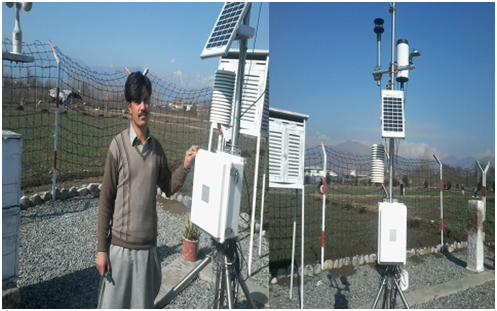
Climate change significantly increasing water demand, limiting crop productivity, reducing water availability in areas where irrigation is most needed or has comparative advantage in some other regions. Global atmospheric temperature is predicted to rise by approximately 4˚C by 2080, consistent with a doubling of atmospheric CO2 concentration.10 Mean temperatures are expected to rise at a faster rate in the upper latitudes, with slower rates in equatorial regions. Mean temperature rise at altitude is expected to be higher than at sea level, resulting in intensification of convective precipitation and acceleration of snowmelt and glacier retreat. In response to global warming, the hydrological cycle is expected to accelerate as rising temperatures increase the rate of evaporation from land and sea. Thus rainfall is predicted to rise in the tropics and higher latitudes, but decrease in the already dry semi-arid to arid mid-latitudes and in the interior of large continents. Water-scarce areas of the world will generally become drier and hotter. Both rainfall and temperatures are predicted to become more variable, with a consequent higher incidence of droughts and floods, sometimes in the same place. Runoff patterns are harder to predict as they are governed by land use as well as uncertain changes in rainfall amounts and patterns. Substantial reductions (up to 40percent) in regional runoff have been modelled in southeastern Australia and in other areas where annual potential evapotranspiration exceeds rainfall. Relatively small reductions in rainfall will translate into much larger reductions in runoff, for example, a 5percent fall precipitation in Morocco will result in a 25percent reduction in runoff. In glacier-fed river systems, the timing of flows will change, although mean annual runoff may be less affected. As temperature rises, the efficiency of photosynthesis increases. Water management in crop production tends to be concentrated on food crops where the timing and reliability of supply is critical. Water management (irrigation, drainage and water conservation and control) achieves stability of crop production by maintaining soil conditions close to optimum for crop growth. Irrigation allows the cultivation of crops when rainfall is erratic or insufficient, insures high-value, high-risk horticulture from failure and has played a major role in achieving national and regional food security in Asia, as well as improving individual livelihoods.11
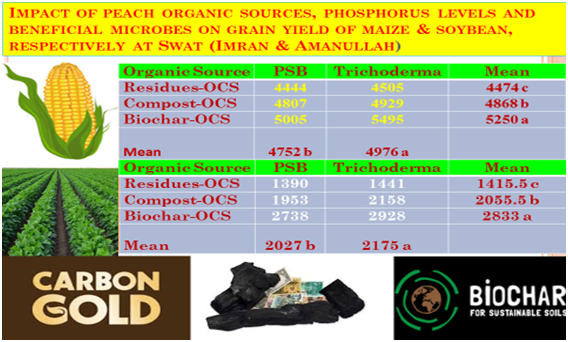
The extent and area of irrigation has grown massively in the twentieth century but has depleted surface and groundwater flows, often with severe consequences for aquatic co-systems and those dependent on them.12‒14 It is increasingly recognized, although rarely common practice, that greater net socio-economic benefit can be obtained from maintaining the integrity of managed ecosystems.13 In the future, food security strategies will be more complex. Higher temperatures will increase water demand, and where rainfall declines, many will seek more irrigation to ensure food security and maintain livelihoods. At the same time water supplies available for irrigation will become more variable and will decline in many parts of the world. New agricultural demands will be further tempered by the need to achieve better equity in access to reliable food supplies than in the past. As irrigation has been applied on only 20percent of the world’s cultivated land, there have been many, often the poorest, who have missed its benefits. The need to maintain viable aquatic eco-systems will place further stress on water resources, especially where the poorest are dependent on them for their livelihoods. Water allocations to agriculture may fall in many parts of the world owing to the combined impacts of climate change, environmental needs and competition from higher value economic sectors. There will be strong pressure to produce more with less water, and to spread the benefits of all water use more widely and wisely. This task will be even more challenging because higher temperatures will reduce potential land and water productivity. These are not academic considerations. Climatic variability in south-eastern Australia has had more profound impacts on water allocations and associated livelihoods in agriculture than even the most prudent farmers had anticipated and big changes lie ahead.
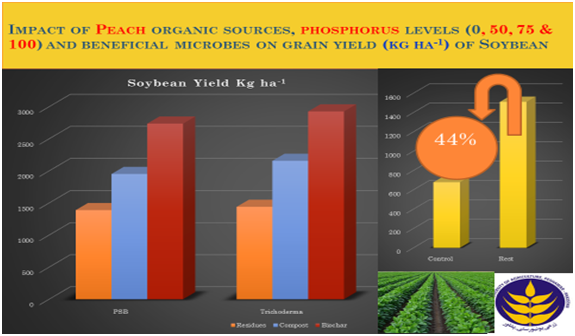
Rainfed lands account for more than 80percent of global crop area and 60percent of global food output but are especially susceptible to the impacts of climate change, more so in the arid and semi-arid regions.15 In general, the productivity of rain fed agriculture in Pakistan is considerably lower than in more secure irrigated conditions, where the use of other factor inputs is generally higher. Many sophisticated adaptations have been developed by farmers to allow cropping in precarious arid and semi-arid conditions, including mixed and companion cropping, floodwater spreading and runoff harvesting. Substantial literature exists on the likely impacts of climate change on rain fed agriculture, with only a skimpy outline given here. Rainfed and pastoral agriculture dominate land use in many countries and are therefore a major determinant of hydrology and runoff in a river basin. Pakistan and Specially Khyber Pakhtunkhwa agriculture is predominantly rainfed, with low and erratic rainfalls by small subsistence farms. There is growing realisation that the subsistence model of development cannot power rapid economic growth in Pakistan and that it is unlikely to make the required difference to the lives of the poorest.3,16 Various forms of foreign direct investment in agriculture (including land purchase) have generated much debate and apprehension over the past five to ten years, but the development of an indigenous commercially based agricultural sector is limited.

The transaction costs raising the intensity of farming are lower in commercial farming than in subsistence production, indicating a window of opportunity for production growth.17 One of the main debates on how to feed the world’s growing population is the future balance between irrigated and rainfed agriculture. Higher productivity and relative security of irrigated agriculture is offset by the undesirable environmental consequences of diverting, storing and consuming stream flow and groundwater. This debate will be further complicated by the impacts of climate change on agriculture. Rainfed agriculture is reliable and productive at higher latitudes, and can be so in the humid tropics. However in the mid-latitudes (sub-humid tropics, seasonally arid, semi-arid and arid tropics), rainfed agriculture generally has low productivity and is prone to drought and crop failures. Rainfed staples (such as wheat, maize, sorghum andmillet) are generally grown in conditions of deficient or sufficient rainfall. However, rice is naturally adapted to wet environments with excessive rainfall, requiring some measure of water control.
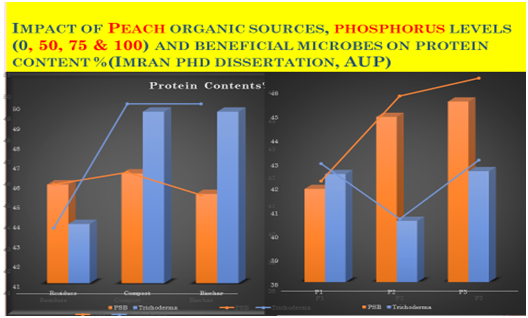
Climate change and soil resources
Pakistan has made significant improvements in achieving food security in recent years, and close to being self-sufficient in terms of the food dietary energy available to the population. Soils are the support of primary production in terrestrial ecosystems.18 Therefore, agricultural production of food and fiber for the human population is strongly dependent on soil resources. At the ecological and human time scales, soil resources are non-renewable. Therefore, soil conservation is a critical factor to ensure increasing food demands. Soils can be a carbon (C) source and sink. Therefore soils contribute to the regulation of the carbon cycle and its consequent effects on climate change. Changes in land use constitute the driving force that determines the soil’s role as a source or as a sink of C. Tilling of land has led to a loss of organic carbon (which we will refer to hereinafter as OC) and an immediate increase in carbon emissions, whereas the reforestation of croplands causes an increase in carbon sequestration. However, sequestration of C under forestry or other non-agricultural land uses often only slowly replaces OC lost through cropping, and such differences in time scale between loss or change of soil properties due to man and their reversal are commonly several orders of magnitude different. Furthermore, the properties of soils are sensitive to climate change. In mineral soils, the approximate relationship between organic matter and soil organic C is 1.724x% OC=% organic matter. Temperature increase would cause a higher decomposition rate of the OC. Increased drought would have the opposite effect. The possible increase in plant productivity due to the fertilizing effect of an increase in atmospheric CO2 would lead to an increase of OC inputs to the soil, especially with intensive cropping (assuming no hydrological or nutritional limitations).
In natural ecosystems where productivity is limited by N shortage, increased atmospheric N deposition would increase OC inputs to the soil. On the contrary, decreased productivity due to intensification of water stress leads to losses of soil OC. The foreseeable increase in the occurrence of forest fires would cause losses of OC and would increase the risk of erosion. Increased soil erosion causes the loss of upper soil horizons richer in OC. In areas in which forest fires are a recurring phenomenon, like in the Mediterranean basin, the production of highly stable forms of OC during combustion of biomass (charcoal) can contribute to the stabilization of C in the medium term.19 All these processes do not exclude each other and some of the feedbacks may be positive, causing a multiplying effect. OC is intimately linked with the natural fertility and productivity of soils) as a source of macronutrients, especially N and P) in relation to the substrate of the soil’s microbial activity) humified carbon contributes greatly to the capacity to retain nutrients and pollutants (capacity for cation and anion exchange capacity). Humic substances of lower molecular weight (fulvic acids) improve the solubility of some essential micronutrients, and of toxic metals. It is a critical factor in the development and maintenance of soil structure and in the stability of soil aggregates and, consequently, of the physical properties that depend on these factors: water infiltration capacity, water holding capacity for plants, aeration, compaction, erodibility. Another process that would probably be affected by climate change is soil salinisation. Projected Increasing in evapotranspiration and drought would raise water table, saline intrusion and accumulation of salts in the rooting soil depth in arid and semiarid lands. These processes can be reduced with the application of appropriate farming techniques, tilling, irrigation control and management of organic amendments, along with the reforestation of barren lands.20 In short, those measures promoting soil fertility would set off a multiplying effect in the ecosystems’ capacity to fix atmospheric carbon in the long-term. Of course, land use will almost certainly change as a consequence of climate change, opening opportunities to novel crops and varieties adpated to the new conditions, including the corresponding changes in cropping systems.
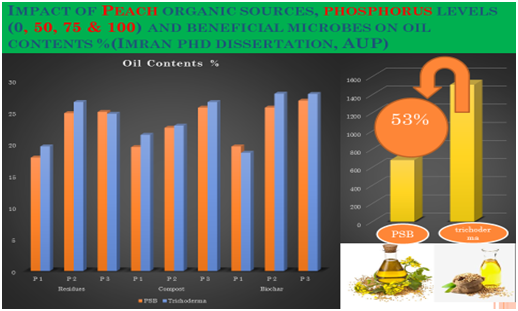
Climate change and food security
Food security has remained the foremost objective of the Government of Pakistan. Therefore, policymakers spend substantial time on designing sound food policy leading to food security.10 Various factors have impact on food security including agronomic, institutional, political factors, in addition to climatic factors. Climate change is considered the most crucial factor influencing food security. Food security includes different dimensions, namely production, distribution and accessibility. Considering food production dimension, the studies show substantial impact of temperature and rainfall on food production.2‒4 Wheat is the staple food crop in Pakistan and thus, food security policy mainly focuses on wheat production in the country. Farmers sow wheat in winter and harvest it in summer. Before the flowering stage, cold temperature accelerates wheat growth process because high temperature can cause a delay in the growth of seedlings. Rainfall can damage wheat production at the time of harvesting, ultimately leading to a threat to food security in Pakistan.4 During the recent years, harsh weather conditions in Pakistan have affected adversely the supplies of agriculture production, particularly foodcrops and it is expected that food production will be threatened in the coming year’s aswell.5 Further, changes in temperature and rainfall during reproductive and vegetative stages are important in wheat production.6,7 Some estimates show that wheat availability in the country has declined in the recent past.8,9
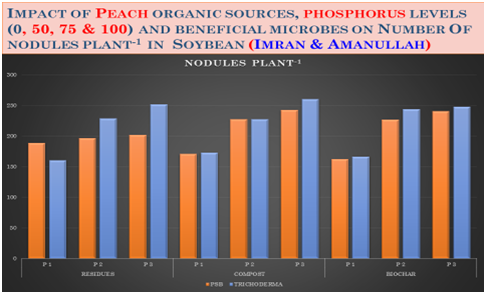
Per capita availability of wheat in Pakistan has an important position to achieve objective of sustainable food security. Although pricing system and regional trade strategies21,22 have important policy concerns, climate change has significant impact on wheat production. The demands for determining impact of climate change on wheat production in the country achieving goal of food security, especially for poor population becomes difficult as aresult of climate change18,23‒25 coupled with other problems, such as rising population, shortage in water availability and land degradation. Further, climate change is also linked to a decline in crop productivity26,27 thereby adversely affecting food security in Pakistan.
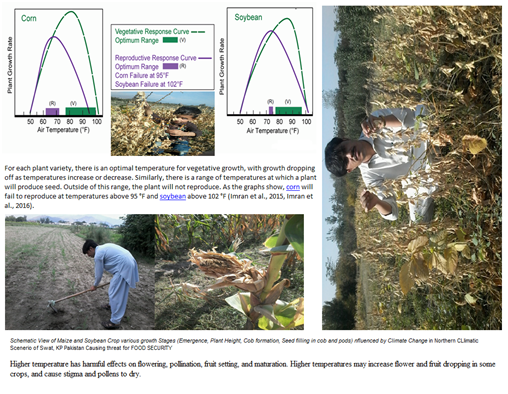
Adapting to climate change can reduce the negative impact on agricultural productivity.28 This paper focuses on wheat, maize, rice, soybean and other pulses production in the presence of climate change in Pakistan. Small farms in Pakistan dominate as they account for more than 90percent in total farms29 and food productivity is highly determined by these small farms. Punjab is the largest province of Pakistan with a contribution of around 80percent in wheat production while KP share about 65% maize and 40% soybean and rice. Farmers in the non-irrigated region are more vulnerable to climate change compared to irrigated region, since farming totally depends on climatic factors. Thus it is imperative to consider both regions separately in determining the effects of changing temperature and rainfall on wheat, maize, rice, soybean and other pulses production.30
This paper focuses on wheat, maize, rice, soybean and other pulses production in the presence of climate change in Pakistan. Small farms in Pakistan dominate as they account for more than 90percent in total farms and food productivity is highly determined by these small farms. Punjab is the largest province of Pakistan with a contribution of around 80percent in wheat production while KP shares about 65% maize and 40% soybean and rice. Farmers in the non-irrigated region are more vulnerable to climate change compared to irrigated region, since farming totally depends on climatic factors.
None.
Author declares that there is no conflict of interest.

©2018 Imran,, et al. This is an open access article distributed under the terms of the, which permits unrestricted use, distribution, and build upon your work non-commercially.